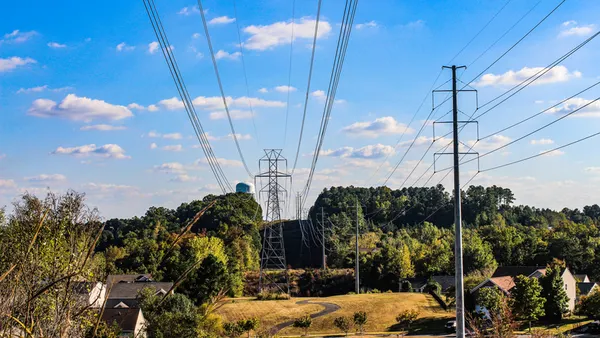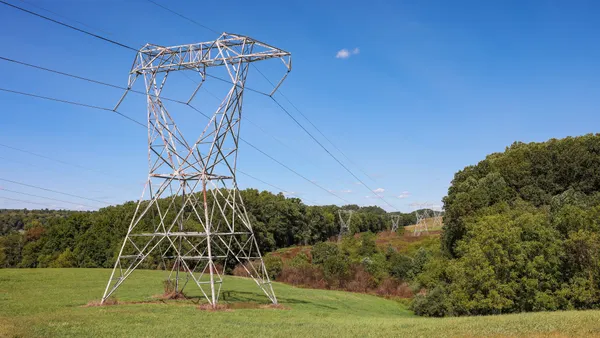The Institute of Electrical and Electronics Engineers (IEEE) has a published guide titled IEEE Standard 524, Guide for the Installation of Overhead Transmission Line Conductors. Of particular note in the guide is a section on conductor creep correction. The existing guidance, published in 2016, suggests line crews should consult the conductor manufacturer to determine if short-term creep correction factors are required if they leave a conductor in the stringing blocks for more than 24 hours. Furthermore, IEEE Std 524-2016 states that conductors and/or stringing blocks could be damaged if the conductor is left in the blocks for more than 72 hours.
The installation process for overhead conductors is carefully prescribed to ensure that as-built transmission lines match the engineering design. Stringing blocks — sometimes referred to as travelers — are pulleys that are temporarily hung on the crossarms of transmission towers to allow a pulling line, and then the conductor itself, to be pulled through, from tower to tower. After stringing the conductor through the blocks, crews sometimes must leave it overnight, or for the weekend, before moving on to the next phase of installation. This pause is when conductor creep is most likely to happen.
In the next phase, called sagging, crews tension the conductor to the specified sag before moving it from the stringing blocks into permanent suspension clamps and dead-end terminations. If the engineer-of-record suspects the stringing process may have caused undesirable conductor creep, the conductor manufacturer should be contacted to see if the sagging tension should be adjusted to meet the design specifications. This is called creep correction. “The current guidance directs utilities to consult the conductor manufacturer about the amount of creep correction needed, if any, after just 24 hours in the blocks,” said Drew Pearson, a transmission engineer at Southwire. “Since the need for creep correction is dependent on installation practices, IEEE left the guidance on corrective action up to the conductor manufacturer.”
Conflicting models in the industry
Confusion arose when utilities asked conductor manufacturers about creep correction. Some manufacturers recommended creep correction in response to short installation delays. However, Southwire typically did not recommend creep correction as supported by their predictive model utilizing actual stress-strain test results.
In 2018, Southwire completed lab testing to determine the accuracy of their predictive model. The company compared stress-strain test results on two conductor samples from the same production reel. Before testing, one of the samples was tensioned at 15% of rated breaking strength (RBS) for six days. As reported in Southwire’s paper, “Creep Correction for Bare Overhead Conductors,” the stress-strain test results showed no difference between the performance of the two samples, validating the accuracy of the current model.
The testing confirmed what Southwire had been telling its utility customers. “Under normal conditions and moderate tension, short delays in the installation process have no effect on the line design,” Pearson said.
Settling the issue for good
Southwire presented its test results and recommendations at the IEEE Overhead Lines Subcommittee meeting in Portland, Oregon, in August 2018. In the presentation, Southwire recommended considering creep correction only when the stringing tension exceeded 10% RBS or 50% of the sagging tension.
Southwire provides creep correction on a case-by-case basis only if a conductor is exposed to tensions exceeding those values for longer than one hour. “It’s understandable that utilities were wary when one manufacturer told them creep correction was necessary, and another said the opposite,” Pearson said. “Recent discussions have shown that conductor manufacturers are now on the same page with their creep correction guidance, and the next revision of IEEE Std 524 can now include more helpful language that all conductor manufacturers can support.”










